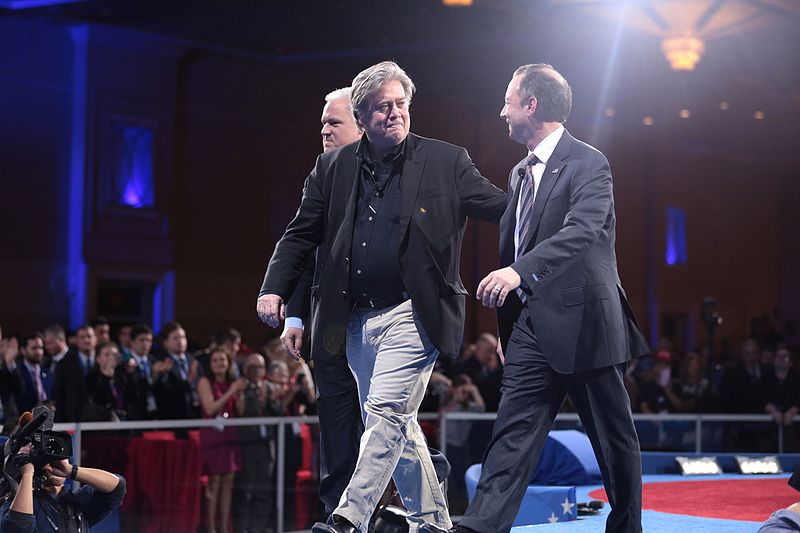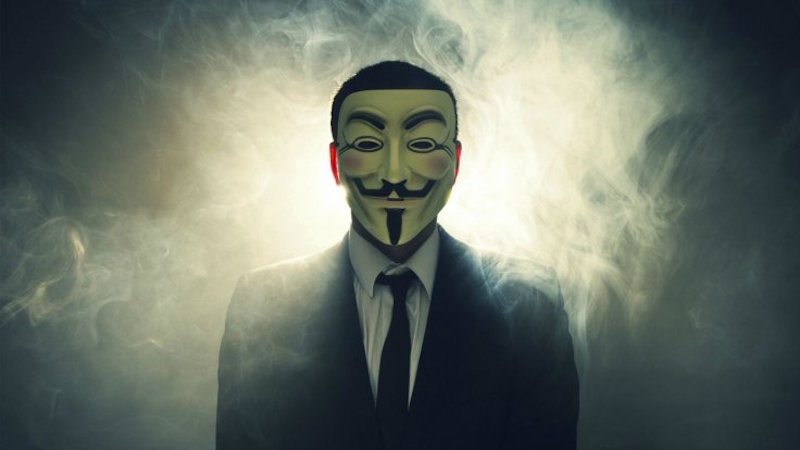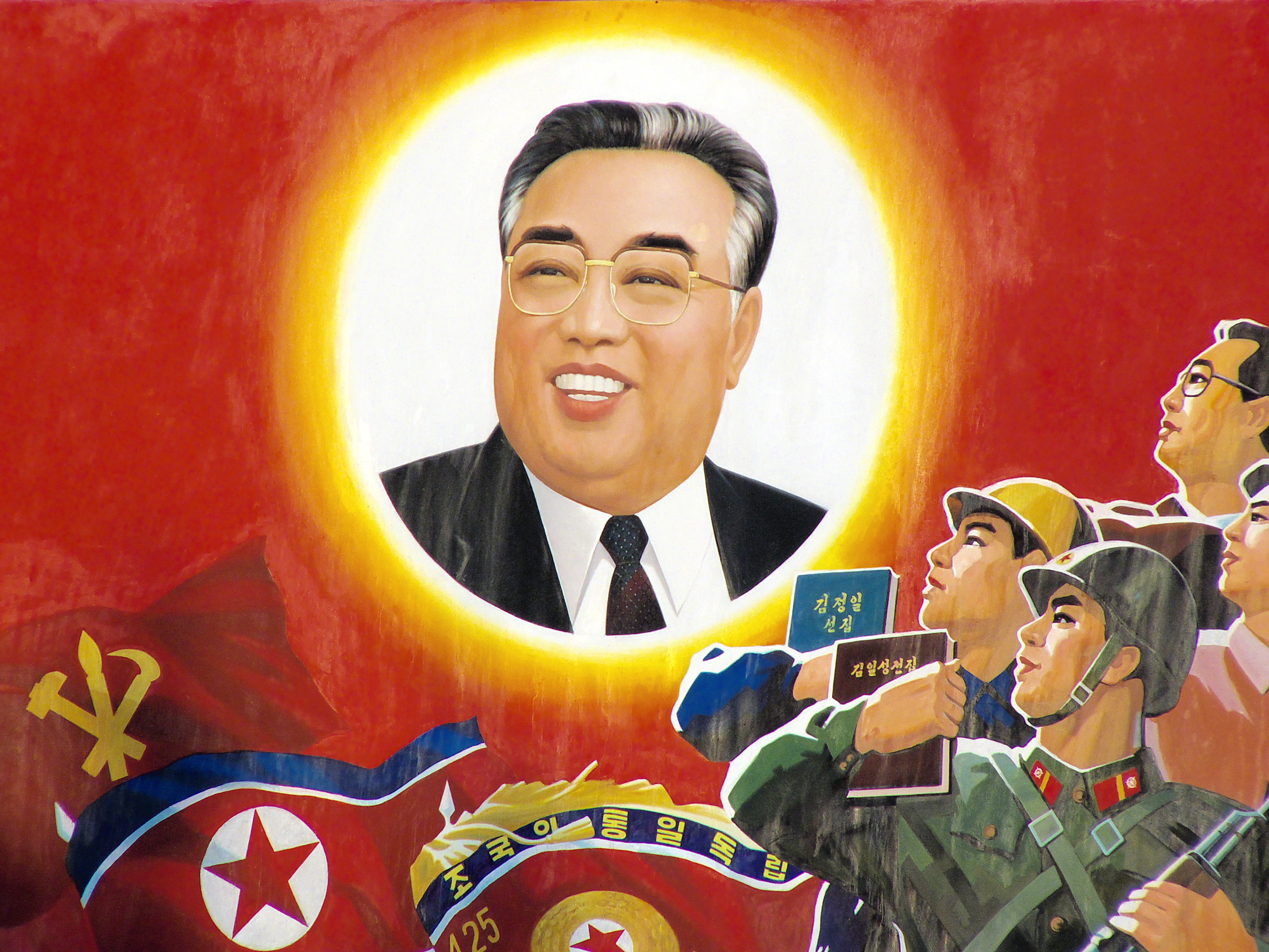This is the fourth part of an ongoing, occasional series on the alt-right in power. See Part 3 for Steve Bannon’s thoughts on defeating the forces of globalization.
Given Steve Bannon’s grandiose vision of historical forces at work, one wonders whether the Chief Strategist sees his place as the helmsman of the wheel of history. After all, Bannon once declared (infamously) that “darkness is good” and mused that Dick Cheney, Darth Vader, and Satan were emblems of power. All it took for his cause to grow was, he thought, the liberal media establishment not knowing what they would be up against. When Trump was sworn in, few knew what an unpredictable Trump administration would do–or would be capable of doing.
In the weeks after Trump’s inauguration, Bannon wasted no time in implementing his vision of “America First,” holding a virtual carte blanche on shaping Trump’s agenda, as an unaccountable policymaker. Along with fellow nationalist aide Stephen Miller, Bannon was responsible for writing Trump’s inauguration speech, which framed the presidency as one fighting against an apocalyptic vision of “American carnage”. Invoking imagery of decaying factories and poverty, Trump promised to return political power to the American people from the Beltway elites and turn the clock back on economic globalization. Classic Bannon hallmarks, all.
But words soon became action. In late January, Bannon’s executive order-writing skills caught the world off-guard in a double feature. On January 27, Trump signed Executive Order 13769, which prohibited all entry into the United States from seven Muslim-majority countries, ostensibly to prevent domestic terrorism. The order’s executive was a chaotic mess as few people outside of Trump’s inner circle were prepared to implement the order. It quickly became clear that Bannon and Miller were responsible for not only writing the disastrous travel ban for seven Muslim-majority nations, but had actually vetoed the Department of Homeland Security’s exemption for green card holders.
Amidst the growing clamour of protests against the travel ban, the second executive order was announced: the National Security Council would be reshuffled, giving the Chief Strategist a seat on the principals committee, while simultaneously demoting the Director of National Intelligence and the Chairman of the Joint Chiefs of Staff as permanent representatives. That a partisan official to sit on the NSC on a permanent basis was an unprecedented move: while George W. Bush refused to allow political advisor Karl Rove to come near the NSC, Barack Obama occasionally allowed his own advisor David Axelrod to audit some meetings on an invitational basis.
This appointment came on top of the internal think tank, the Strategic Initiatives Group (SIG), that Bannon and Jared Kushner established as a parallel structure counterbalancing the influence of the then-National Security Advisor Michael Flynn within days of Trump’s inauguration. While the White House argued that Bannon’s previous military experience made his appointment relevant, critics quickly rallied behind viral hashtag #stoppresidentbannon in opposition, and mocked Trump as Bannon’s puppet.
The stunned reception provoked by these two orders is emblematic of Bannon’s policymaking process: an over-reliance on opaque secrecy and distrust of other executive departments and officials. Under any other presidential administration, policymakers were to consult relevant stakeholder departments or officials to ensure a smooth and coordinated implementation. But under Trump, as CNN reported soon after the travel ban, Bannon and Miller were responsible for writing the executive order with without consultation from other officials or other departments. But this conspiratorial policymaking process was so secretive that sources have suggested that Trump himself does not review the executive orders that he had signed, as Trump himself seemed to have been unpleasantly caught by surprise by Bannon’s promotion to the NSC by his own hand.
Bannon’s quiet amassing of power is paradoxical to his vision for the Executive Branch. In his February remarks to the Conservative Political Action Conference (CPAC), Bannon reiterated his agenda for the “deconstruction of the administrative state”. He outright confirmed that these cabinet appointees “were selected for a reason and that is the deconstruction. The way the progressive left runs, is if they can’t get it passed, they’re just going to put in some sort of regulation in an agency. That’s all going to be deconstructed and I think that that’s why this regulatory thing is so important.”
Since coming into office, Trump had been working to streamline, if not deconstruct, the executive branch as well. His critics have pointed out that many of his cabinet appointees held political ideologies were hostile to the departments they would be running, or were not competent to run them. For instance, former Governor Rick Perry was no friend of the Department of Energy, having wanted to abolish it during his 2012 Republican Party primaries campaign—if he could remember what it was called. Ben Carson self-consciously admitted that he was unqualified to be head of the Department of Housing and Urban Development (HUD). Scott Pruitt, head of the Environmental Protection Agency (EPA), directly contradicted his agency’s adherence to scientific consensus by denying the role of carbon dioxide in climate change.
Moreover, Trump signed an executive order on March 13, titled “Comprehensive Plan for Reorganizing the Executive Branch”, which called on the heads of each Executive Branch agency submit plans to “the Director of the Office of Management and Budget” Mick Mulvaney, who would then “propose a plan to reorganize governmental functions and eliminate unnecessary agencies…components of agencies, and agency programs.” This blow to the Executive Branch is only the latest in the Trump administration’s hostile actions towards Executive Branch agencies. While federal hiring had been suspended since January, the EPA, the Education Department, and State Department are will undergo severe budget cuts in the presidential budget.
With this rapid succession of sweeping executive orders, Bannon’s writing efficiency and nebulous influence over the White House was so remarkable that commentators speculated about whether Bannon was planning some kind of coup. Perhaps the Darth Vader-admiring Bannon felt vindicated in his presuppositions of how the liberal media would fear him as the alt-right grey eminence in the White House, and how this would only enhance his power. Either way, as it happened, February marked the apex of Bannon’s influence over not only the White House, but also the news cycle. As we shall see in Part 5, Bannon was to become a victim of his early momentum.
Chief White House Strategist Steve Bannon and Chief of Staff Reince Priebus speaking at the 2017 Conservative Political Action Conference (CPAC) in National Harbor, Maryland (2017), by Gage Skidmore via Wikimedia Commons. Licensed under CC BY-SA 2.0.
Disclaimer: Any views or opinions expressed in articles are solely those of the authors and do not necessarily represent the views of the NATO Association of Canada.




